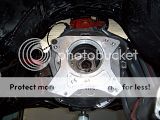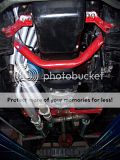powerband":2vnp8us2 said:
....I run a C6DE 250 and also building a D7 250 block
Mmm! Okay but that confirms the Consumer Guide that the 250 engine was a pick-up truck engine, which then ended up in passenger cars. So where did you get a C6 DE 250 and D7 blocks from?
FalconSedanDelivery":2vnp8us2 said:
.... 351W Bells typically have the bigger Flywheel / Flex plate , Just use the 300 Flexplate, with it and now you have a big combo.....
Yeah, that's what we had down here too. We used lots of so-called C9 (small 157 teeth) and a so-called C10 (164 teeth, same as FMX). They were on two types of C4, case fill or pan fill.
That's what is so cool about the fat US 250 block. You can fit the really heavy duty big ass C4/C5 stuff right up. What we antipodean types have found is that later post 1983 5.0 (and 5.8 truck) stuff fits right up to any six bolt block, 240, US 250, 255-302-351.
If its a post 1983 manual, it will have a different trans centre hole diameter, bellhousing depth, and be designed for the T5. If it's auto, some 1966 to 1982 C4 bell housings run the same bellhousing as the C5 lock-up clutch auto bellhousing. The C5 used a stock small block truck bell design to fit the larger lock-up clutch, about 3/4" longer from stem to stern.
The 157 vs 164 switch over was different, depending on if it was a Windor 302 or 351, or a truck or passenger car. Down here from 1972-1985, we had Cleveland 302C and 351C's which followed standard truck 302W and 351W practice. Trucks generally used the bigger FMX auto with 164 teeth bell, or the larger pan fill C4's with 164 teeth if it was a 351. Some even had small bell C6's from the 4.9 300 engines.
The US sedan cars were a hotch potch of changes. The 1980 change to 50 oz from 28oz unbalance for 5.0's eliminated the earlier Mustang II 148 and 143 flexplate sizes, and probably the 157 teeth as well. For instance, the later X-shells (71-77 250 Maverick, 75-81 non Fox Granada) got little 157 tooth bells. The 1983 5.0 GT 4-BBL T5 area, everything went 164 teeth, but then the F150 truck used 5.0 engines with 50 oz unbalance, and also went to a bigger 164 teeth bell housing.
Our Aussie truck and car stuff used Canadian import US engines till 1973/1974 and US gearboxes always. The early F100 truck auto 302's used 157 teeth bells, but the sedan versions of the later 351C's used 164 teeth auto flywheels, and then the F150 versions from that time had 164 teeth bellhousings, with no manual options.



